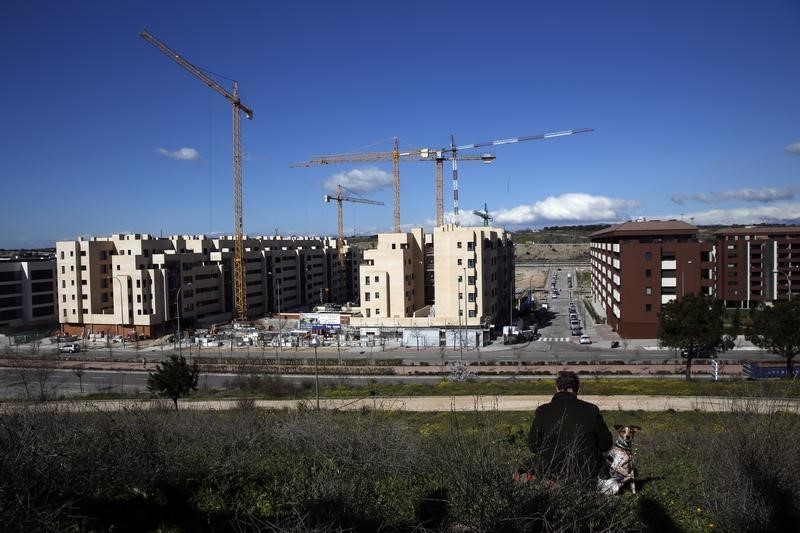(Bloomberg) -- Spanish bad bank Sareb’s record of selling assets has been far from stellar. To understand why, look no further than this frustrated buyer of a Costa del Sol property.
The buyer, who asked not to be named, contacted Sareb about the plot around a partially finished golf course in southern Spain. For Sareb, charged with offloading non-performing assets taken over from Spanish banks, it was an opportunity to tick another problem property off its list.
But after 18 months of negotiations with nine different people at Sareb and its sub-contracted servicer company that holds the sales rights, the buyer walked away. The plot remained with Sareb, whose 34 billion-euro ($38 billion) portfolio of non-performing real estate assets -- from medieval castles and hunting lodges to rabbit farms -- is Europe’s largest, according to investment banking consultancy Evercore.
As with Goldman Sachs (NYSE:GS) & Co., which tried unsuccessfully last year to persuade the bad bank to sell a large portfolio, investors are finding out that a complicated operational structure and conflicting shareholder interests make buying assets from Sareb difficult. Its chief, Jaime Echegoyen, concedes Sareb’s record isn’t exemplary.
“We try to guarantee that the investor clients receive the service they deserve in each one but it’s possible it’s not always like that,” he said in an interview in Madrid.
With Spain’s real estate market losing some steam after half a decade of growth, doubts are mounting about Sareb’s ability to meet its original mission -- to pay back by 2027 the more than 50 billion euros in capital and debt injected into it by the state and banks.
The bad bank said this week that it’s shaking up its management structure. It plans to appoint a chief executive officer to take over business responsibilities so Echegoyen can focus on corporate issues.
Sareb was created in 2012 when Spain was in the throes of a financial crisis after its real estate market bubble burst. About half way through its 15-year lifespan, it has sold only about a third of the net 51 billion euros of defaulted loans and real estate assets it bought at a discount from troubled banks. With the reduction of bad loans tailing off since 2017 and with investors picking off the jewels, Sareb is sitting on more and more unattractive assets.
The entity may have to accept lower returns if it wants to wind-up the operation as planned by 2027, said Elena Iparraguirre, director of financial services ratings at S&P Global Ratings.
“If the cost at the end is that the remaining assets have to be liquidated at very low prices, politically it may still be a good decision to take,” she said.
That may be easier said than done.
Creating Sareb was a condition of Europe’s bailout of Spain’s banks. It allowed lenders that took state aid, such as Bankia SA, to jettison soured assets. With mounting public anger about the bailout, the government persuaded banks such as Santander (MC:SAN) SA and CaixaBank SA to buy a 55% stake in Sareb. The government controls the rest.
But Sareb was dealt a difficult hand. It was given no time to build a team, so it relied on structures banks already had in place. Four bank-owned servicer companies divided up and marketed portfolios assigned to them, with commissions depending on the prices they secured.
The servicers were later sold to global investment funds. Cerberus Capital Management LP bought Haya Real Estate SAU from Bankia. Italy’s doBank took an 85% stake in Altamira Asset Management. CaixaBank SA sold Servihabitat SA to Lone Star Funds and Intrum AB bought Solvia Servicios Immobiliarios SL from Banco de Sabadell SA.
Sareb’s objectives often diverge from those of the servicers. Both need to sell but Sareb can accept losses while the servicers driven by commissions are often unwilling to settle for lower prices.
Many of the assets Sareb took over from banks were grossly overvalued, according to a person with knowledge of the process. In some cases, holes were dug and foundations laid on properties to bump up their categorization and reduce the discount banks had to give Sareb, the person said. Sareb’s team of about 60 people had just a few months to put a price on more than 200,000 assets, with little time for on-site visits.
Sareb also has a conflicting relationship with its shareholding banks. While Sareb mainly reduces its stock one asset at a time, Spain’s banks, buoyed by the country’s economic recovery, sold their portfolios in huge packets at large discounts to funds. In the first half of this year, Spanish banks and funds sold 4.5 billion euros of bad loans compared with 388 million euros in process for Sareb, according to data compiled by Evercore.
Yet when Goldman Sachs proposed to Sareb selling off a large portfolio, the idea was voted down by the board, comprised largely of bank representatives worried about flooding the market, people familiar with the operation said. Echegoyen says the deal failed because Sareb couldn’t offer the kind of discount such a large package would demand.
Sareb is trying to address some of its structural issues. It wants to renegotiate its relationship with the servicers to lower fees and take back control of some of the maintenance and legal activities. The bank has opened up the bidding process to other companies to drive competition.
While Sareb struggles, its regional counterparts have fared well. Ireland’s National Asset Management Agency, or NAMA, created in 2009 to dispose of 32 billion euros of soured assets from the banking sector, met its objective in eight years.
Whatever Sareb’s record, one thing is incontrovertible, said Echegoyen.
“We have saved the Spanish financial system,” he said. “It doesn’t mean Sareb was the white knight but we were part of a white knight – perhaps the shield or the lance or the horse.”
